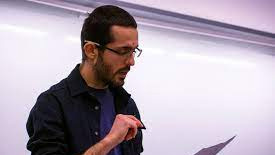S-Lab - Boris Harizanov (Stanford) / Syntactic head movement and projection

S-Lab - Boris Harizanov (Stanford) / Syntactic head movement and projection
Tuesday April 26, S-Lab hosts guest speaker Boris Harizanov, Assistant Professor of Linguistics at Stanford. Abstract below the line.
Syntactic head movement and projection
In this talk, I explore syntactic head displacements (in the sense of Harizanov and Gribanova 2019) in the context of a Merge-based approach to the creation of syntactic structure. Drawing on data from a range of languages, I show that there are two types of syntactic head displacements. One type, which I call head-to-spec movement, is potentially long-distance and targets a specifier position (examples include "long head movement" and predicate fronting/clefting, a.o.). The other type, which I call head-to-head movement, is more local and targets a head position (examples include certain "head substitution" movements such as T-to-C and N-to-D, a.o.). Both types can be understood as instances of syntactic movement (Internal Merge). Head-to-spec movement falls out more or less directly once it is recognized that, in this framework, there is no principled difference between heads and phrases and that movement applies in the same way to both heads and phrases. Head-to-head movement also falls out once we adopt certain minimalist assumptions about labeling and the notion 'extended projection' — including that movement, like base generation, can express functional structure and create extended projections. These proposals offer a fresh perspective on the properties of head-to-spec and head-to-head movement and an understanding of why these are the two types of syntactic head movement that exist. A major theoretical consequence is the unified treatment of head and phrasal movement in terms of (Internal) Merge as well as a more complete integration of movement into Merge-based structure building.

